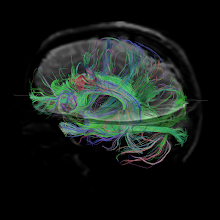Polar Lights: Starting off with the big shots, aurora borealis and aurora australis. Best spotted near the north and south poles respectively, these have nothing to do with weather and everything to do with magnets. Molecules of oxygen or nitrogen in the upper atmosphere are ionized by solar wind racing along the Earth's magnetic field, and then regain an electron or return to ground state and release energy by emitting light. Nitrogen makes blue or red; oxygen is green or red.
Crepuscular Rays: I used to call them God rays when I was a kid...okay, or maybe I still do. Anyway, the crepuscular bit means they're visible around sunrise and sunset. They can occur in either air or, less often, in water, but the reason they happen at all is because mountains, clouds, etc. shadow all but a small fraction of the sun's rays, which then get diffracted/reflected/scattered by tiny suspended particles. Apparently they're most common in Antarctica.
Sundogs: Scientifically known as parhelions, sundogs also occur at dusk or dawn when the sun is low in the sky. Although it may look it, these are not photographic effects - a sundog is caused by atmospheric ice. The ice needs to be crystallized...either by being flat and hexagonal and found in cirrus clouds, or something known as 'diamond dust' that's lower in the atmosphere and occurs at colder temperatures. If the crystals are high, a full halo forms around the sun. If they're lower, two bright spots - sort of fake suns - can be seen on either side of the real sun.
Green Flash: Admittedly, I'd never even heard of this one until Cpt. Jack Sparrow came along, but it's not just a Hollywood effect. These always occur at sunset, are quite brief, and can be seen over any horizon (although a flat one - like the sea, or a cloud bank, or any plain really - works best). The reason, again, is simple refraction, although there is a list of optimizing conditions that make this flash more...flashy.
Light Pillars: Ice crystals again! Tiny flat ones in the air during the winter that reflect light up from the ground or down from the sky. Similar to a sundog, but linear. These can be caused by the sun, the moon, or even man-made light sources.
[All of these photos are from National Geographic, with the exception of the green flash, which I have re-blogged from webexhibits.org]
Friday, April 16, 2010
Subscribe to:
Post Comments (Atom)









1 comment:
Science explains, but art celebrates these wonders, so here's a bit of a Robert Frost poem (aptly titled "Atmosphere"):
"Moisture and color and odor thicken here.//The hours of daylight gather atmosphere."
Post a Comment